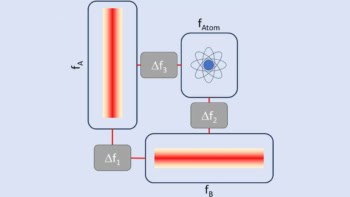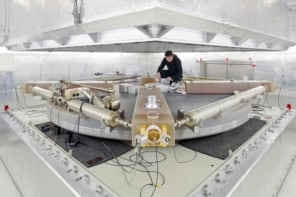Solar neutrinos are the unlikely subject of a cosmological comedy to be broadcast on BBC Radio 4 tomorrow (24 July) at 2.15 pm. Writers Linda Cotterill and Timandra Harkness enlisted the Astronomer Royal for Scotland, John Brown, for expert input into No Future in Eternity, in which an astronomer shares a flat with two angels.
Cotterill and Harkness had not planned to base the show on astronomy. Their initial idea involved the angels, who come to live on Earth after losing their jobs in heaven. But although the angels are wise to the laws of the cosmos, they are mystified by human behaviour. “We thought an astronomer would be the perfect contrast – a human being fascinated by cosmology”, Harkness told PhysicsWeb.
Writing around the time of the 1999 eclipse, solar astronomy appealed to Cotterill and Harkness because of its wide popularity. Brown suggested that the astronomer in the play could be engaged in the high-profile search for neutrino oscillations at the Sudbury Neutrino Observatory in Canada. Despite the subject matter, Harkness emphasises that the comedy – which was adapted for radio following the play’s success at the Edinburgh Fringe Festival – is accessible to all. “As non-physicists ourselves, it was very interesting to learn about the experiment”, she says.
Ironically, it was announced that neutrino oscillations had been detected just two days after the radio show was recorded. Astronomers had previously observed too few neutrinos arriving from the Sun, but their detectors could not detect all three types of neutrino effectively. The fact that neutrinos can change from one type to another – or ‘oscillate’ – en route to Earth explains this shortfall.
“We were still very excited when we heard that they had solved the solar neutrino problem”, says Harkness. “But I suppose that’s the occupational hazard in writing scientific comedy”.



